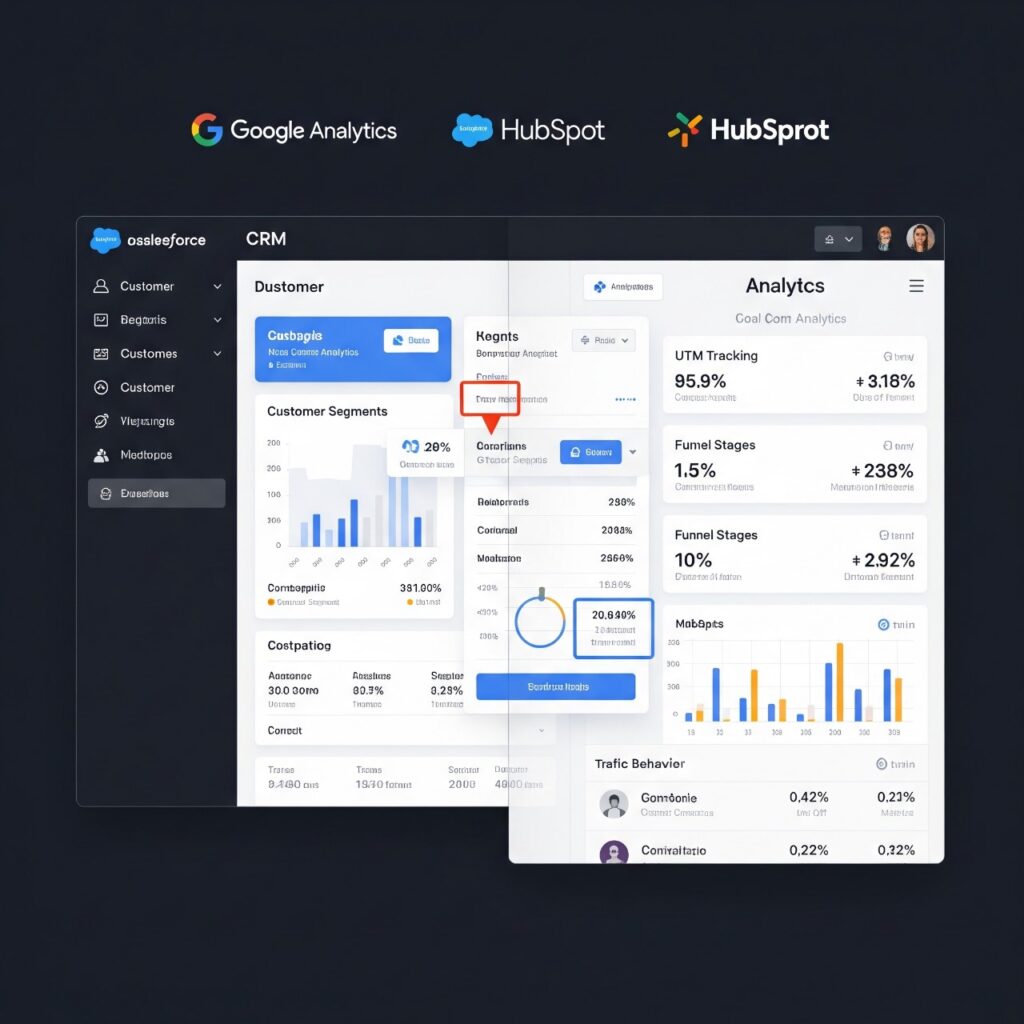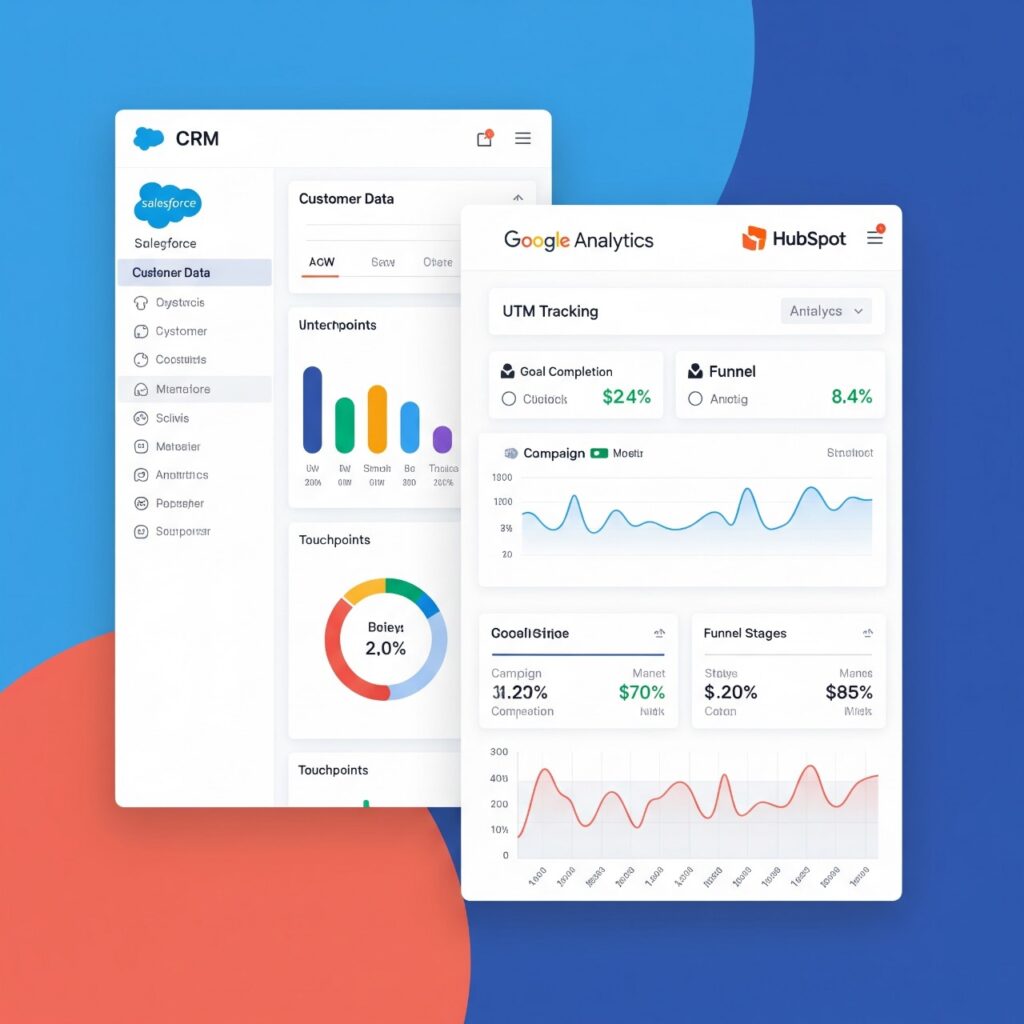
One of the most vital aspects to optimizing performance, justifying the budget, and scaling success is knowing how to conduct effective ROI tracking in marketing campaigns. Without precise ROI measurement, you are essentially marketing in the dark; you use guesswork to know what works and what does not.
In this article, we will lead you through the most important metrics, tools, and strategies needed for efficient ROI monitoring so that every marketing dollar spent yields quantifiable value.
Why ROI Tracking Is Crucial for Modern Marketing

In today’s data-driven marketing arena, where decision-making has become an art, decisions can not be made solely on gut feeling or vanity metrics. From managing paid ads to running email campaigns and organic strategies, the ability to successfully track ROI in every marketing campaign is paramount to justifying value, improving performance, and removing waste.
This helps identify what is working and where to invest more effort in tweaks to strategy in real time. Not only does this help justify marketing spending in front of stakeholders or clients, but it also identifies what is working and where to invest more. Without this, many businesses waste money supporting underperformers while overlooking fantastic opportunities.
Key Metrics to Track ROI in Your Marketing Campaigns Effectively
For a true ROI assessment of your marketing campaigns, there is a need for insight beyond basic analytics, such as impressions or likes. True light is shone on marketing performance when there are metrics that directly tie spending to revenue and growth. These actionable insights allow you to assess whether your strategies are yielding measurable returns—or squandering your resources.
From the mere few selected ROI algorithms provided, both constitute major metrics to be evaluated.
Customer Acquisition Cost (CAC)
CAC refers to the cost of acquiring a customer and tells you how much it costs to acquire a customer. It is calculated by considering expenses incurred in conversions from leads to clients, advertisement spending, employees, tools, agency fees, and campaign expenses.
Formula:
CAC = Total Marketing Spend / Number of New Customers Acquired
For instance, if a campaign cost you $10,000 and it brought a total of 100 new customers, your CAC equals $100.
Why it matters:
Tracking CAC helps ensure that your marketing initiatives are budget-efficient and scalable. If CAC is too high compared to the revenue each customer generates, you’re losing money—even if sales volume looks good. To track ROI in your marketing campaigns effectively, CAC must be aligned with your business’s profit margins and long-term strategy.
How to reduce CAC:
- Improve lead quality through better targeting
- Optimize landing pages and user journeys
- Automate nurture sequences with email workflows
- Refine ad creatives and messaging
Secondary keywords used: customer acquisition cost, marketing budget efficiency
Customer Lifetime Value (CLV)
It is the estimate of how much total revenue could be expected from a customer over the whole life of the relationship with that customer by the business. In contrast to CAC, which deals with short-term costs, CLV is used to understand the long-term success of marketing efforts.
Formula (simplified):
CLV = Average Purchase Value × Purchase Frequency × Customer Lifespan
He was truly a man utterly unmeasured!
Why it matters:
A high CLV indicates a strong customer relationship and a sustainable business model. In terms of the gold standard for ROI evaluation, comparing the CLV with the CAC is the way to go. Ideally, your CLV would be three times higher than your CAC; a ratio of 3:1 should be seen as a healthy benchmark.
Your like-minded area is characterized by a ratio of 6:1, which is a good ROI situation if it costs you 1000 potential clients to have six clients from among those visitors.
Ways to increase CLV:
- Offer loyalty programs or subscription models
- Upsell and cross-sell effectively
- Provide outstanding customer support
- Use behavior-based email campaigns for retention
Secondary keywords used: customer lifetime value, long-term marketing success
Tools and Techniques to Track ROI Effectively

To track ROI in your marketing campaigns effectively, having the right metrics is only half the equation. The other half is using the right tools and techniques to gather, interpret, and apply those metrics in a way that drives meaningful decision-making.
Modern marketing success depends heavily on the infrastructure you build to monitor performance. From CRM platforms to attribution models, these systems connect your marketing activity to actual revenue outcomes.
Use of CRM and Analytics Platforms
Without marketing analytics and integrated customer relationship management (CRM) tools, you may be missing some information. Google Analytics, HubSpot, Salesforce, and Zoho allow users to analyze customer behavior along different channels, from the first click to the final sale.
Here’s how they help you track ROI more effectively:
- UTM Parameters: Attach these to your URLs to track campaign performance across platforms.
- Goal Tracking: Set and monitor specific actions like form submissions, purchases, or downloads.
- Funnel Attribution: Obtain an overview of where users drop off and who proceed to convert in order to shed a new light on evaluating the efficiency of the funnel.
The integration of CRM software with analytics tools enables marketers to link individual leads to specific campaigns, track lifetime value, and assess the efficiency of the pipeline—all critical to ascertaining actual marketing ROI.
Pro Tip: Make sure your CRM is synced with your ad platforms and website tracking tools to close the data loop.
Secondary keywords used: marketing analytics tools, CRM software integration
Attribution Modeling
In the ROI analysis, it is important to find out which marketing channels are converting traffic for the website. Marketing-attribution models are important for establishing a framework for analyzing customers’ buying behavior toward diverse marketing activities, thus driving marketing-policy choices for various marketing activities at play. These models assign value to various touchpoints in a customer’s journey, helping you see which channels and messages are driving results.
Here are the most common attribution models:
- First-Touch Attribution: Credits the first interaction the customer had with your brand.
- Last-Touch Attribution: Gives full credit to the final step before conversion.
- Multi-Touch Attribution: Distributes credit across multiple touchpoints throughout the journey.
For most campaigns—especially those with long sales cycles—multi-touch attribution offers the most balanced view of performance. It takes into account awareness, engagement, and closing activities.
Implementing a solid attribution model helps marketers track ROI in their campaigns effectively by avoiding biased performance data. It also aids in budgeting smarter and investing more in what truly works.
Why it matters:
- Reveals hidden high-performers (e.g., blog posts or emails that indirectly influence conversions)
- Improves cross-channel strategy
- Highlights which steps in the funnel need optimization
Secondary keywords used: marketing attribution models, conversion path tracking
Table: ROI Metrics vs. Marketing Actions
| Metric | Purpose | How It Helps Track ROI |
| Customer Acquisition Cost | Measures how much it costs to gain customers | Helps assess budget efficiency and scalability |
| Customer Lifetime Value | Estimates revenue from each customer | Predicts profitability and ROI ratio |
| Click-Through Rate (CTR) | Measures engagement per campaign | Evaluates effectiveness of ads or emails |
| Conversion Rate | Shows how many actions were completed | Direct indicator of campaign performance |
| Return on Ad Spend (ROAS) | Revenue from ads divided by cost | Tracks ad-specific ROI |
| Bounce Rate | Shows site engagement quality | Flags irrelevant traffic or bad targeting |
Start Measuring What Matters Today

Understanding how to track ROI in your marketing campaigns effectively is the difference between campaigns that succeed and those that stall. When you focus on the right data and implement tools that connect your spend to your results, you create a repeatable, scalable path to growth.
We have the capacity at Digi Dervish to devise digital strategies that are focused on ROI, which means they are not just driving traffic but revenue. Our team would be happy to consult with you and help your business get rid of guessing conditions that brought it down–whether it’s in attribution, analytics, or campaign structure.
👉 Ready to make smarter marketing decisions? Contact Digi Dervish today for a free strategy consultation and see how we can help you track ROI effectively and elevate your marketing results.



